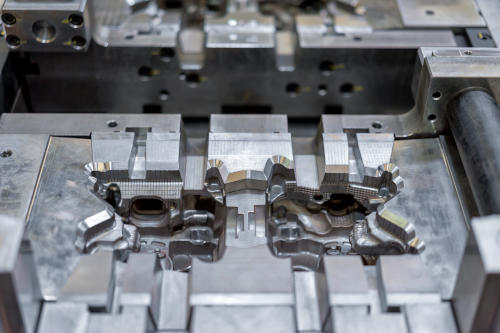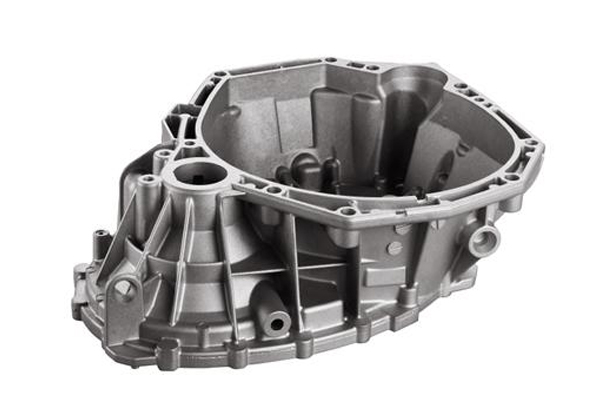Aluminum Casting safety tips for manufacturers and workers
Every little thing You Need to Find Out About the Uses and Advantages of Aluminum Castings
Aluminum castings play a crucial duty across numerous markets, using one-of-a-kind homes that enhance product performance. Their light-weight nature and stamina make them ideal for applications in automobile and aerospace fields. Additionally, the adaptability of casting approaches enables elaborate layouts and limited resistances. As the need for sustainable options rises, understanding the benefits and applications of aluminum castings becomes progressively essential. What particular advantages do they supply over various other products?
Introduction of Aluminum Casting Processes
Aluminum casting processes encompass a selection of strategies made use of to form molten aluminum right into desired forms. These methods consist of sand spreading, pass away casting, and investment spreading, each offering unique advantages relying on the application (Aluminum Casting). Sand spreading includes developing a mold from sand, enabling complex styles and huge elements, while die casting makes use of high pressure to infuse molten aluminum into steel molds, ensuring accuracy and smooth finishes. Investment spreading, also called lost-wax spreading, generates intricate shapes with superb dimensional accuracy, making it ideal for thorough components
These processes are characterized by their capability to produce light-weight, durable parts that show superb corrosion resistance. The flexibility of aluminum enables modification in various sectors, from vehicle to aerospace. Additionally, the ability to reuse aluminum improves the sustainability of these casting processes, minimizing environmental effect while keeping product integrity. Understanding these methods is vital for enhancing manufacturing performance and accomplishing top notch aluminum castings.
Trick Applications of Aluminum Castings
Aluminum castings play an important function across various sectors, especially in automotive, aerospace, and customer electronics. In the vehicle field, they add to light-weight frameworks that boost fuel performance. Aerospace components benefit from aluminum's strength-to-weight ratio, while customer electronic devices utilize its adaptability for reliable manufacturing.
Automotive Market Applications
As the vehicle sector continues to evolve, manufacturers significantly depend on aluminum castings for their lightweight yet long lasting properties. These castings play an important function in improving automobile efficiency, fuel effectiveness, and total safety. Secret applications consist of engine blocks, transmission real estates, and architectural elements, which gain from aluminum's superb strength-to-weight proportion. Furthermore, aluminum castings facilitate complex geometries, enabling for innovative layouts that boost aerodynamics and decrease drag. The rust resistance of aluminum likewise adds to longevity, minimizing upkeep expenses for both suppliers and customers. As electrical cars gain popularity, aluminum castings are necessary for battery rooms and other parts, even more solidifying their significance in the future of auto manufacturing.
Aerospace Part Production
In the aerospace industry, aluminum castings are important to the manufacturing of lightweight, high-performance components. These castings are necessary for making components such as engine housings, structural frames, and landing gear elements, where weight reduction is crucial for fuel efficiency and total performance. The exceptional strength-to-weight proportion of aluminum enables for the growth of intricate geometries that improve aerodynamics. In addition, aluminum's resistance to corrosion contributes to the long life and integrity of aerospace parts, making sure safety and security in trip procedures. The casting procedure likewise permits accurate resistances, which is crucial in meeting strict aerospace industry criteria. Generally, aluminum castings play a critical role ahead of time aerospace innovation while supporting the market's promote lasting methods.
Customer Electronic Devices Manufacturing
The use of aluminum castings in customer electronics production has actually become significantly significant because of their light-weight and sturdy homes. Manufacturers take advantage of these castings to develop elements for various devices, including smartphones, laptop computers, and gaming consoles. Aluminum's outstanding thermal conductivity likewise aids in heat dissipation, boosting gadget efficiency and long life. In addition, the versatility of aluminum enables elaborate layouts and complicated geometries, making it possible for smooth and modern looks that attract customers. Furthermore, aluminum castings can be easily reused, straightening with the expanding need for sustainable manufacturing practices. As innovation advancements, the role of aluminum castings in creating ingenious and efficient customer electronics is expected to increase, making them a staple in the sector.

Benefits of Making Use Of Aluminum Castings
While different materials are available for spreading, aluminum stands apart due to its one-of-a-kind mix of light-weight homes, toughness, and rust resistance. The low thickness of aluminum makes it a perfect option for applications where weight decrease is vital, such as in the automotive and aerospace industries. Its exceptional strength-to-weight ratio allows producers to develop resilient parts without including extreme weight.
Furthermore, aluminum castings can be created with detailed styles and tight resistances, enabling complicated geometries that are difficult to attain with various other materials. The versatility of aluminum enables various casting methods, consisting of sand, pass away, and financial investment casting, accommodating varied manufacturing demands. Moreover, aluminum's convenience of machining and completing enhances its appeal, helping with the development of high-quality surface finishes. Overall, the advantages of making use of aluminum castings add to boosted performance and efficiency in many applications throughout different markets.
Corrosion Resistance in Aluminum Castings

All-natural Oxide Layer
A natural oxide layer kinds on the surface of aluminum castings, supplying a crucial barrier against environmental aspects that can lead to wear and tear. This slim, protective film is a result of the aluminum's response with oxygen in the air, efficiently protecting the underlying metal from dampness, chemicals, and contaminants. Because of this, aluminum castings show excellent corrosion resistance, which boosts their durability and durability in different applications. The oxide layer is not just helpful for protection yet also adds to visual qualities, as it can create a matte internet finish that many markets discover appealing. Furthermore, this natural process minimizes the requirement for extra finishes, making aluminum castings a cost-efficient choice for suppliers seeking trustworthy, durable products.
Alloy Variants Influence
The structure of aluminum alloys significantly affects their deterioration resistance residential properties in castings. Different alloy variations, such as 1xxx, 2xxx, and 6xxx collection, exhibit distinctive levels of susceptibility to corrosion. As an example, 1xxx alloys, mostly made up of pure aluminum, offer superb corrosion resistance due to their high purity. On the other hand, 2xxx alloys, which consist of copper, might experience substantial deterioration when revealed to rough environments. 6xxx alloys, integrating magnesium and silicon, strike a balance between stamina and resistance. The visibility of alloying aspects can enhance or diminish protective oxide layers, eventually influencing durability and performance. Recognizing these variants is vital for choosing the ideal alloy for particular applications where corrosion resistance is crucial.
Design Flexibility and Personalization
Although numerous materials exist for casting applications, aluminum stands out due to its amazing design adaptability and capacity for modification. This flexibility allows developers and designers to produce elaborate shapes and types that meet particular useful needs. Aluminum Casting. The reduced density of aluminum allows light-weight styles, which is particularly useful in markets such as auto and aerospace, where weight decrease is essential
Aluminum castings can be tailored to different specifications, including wall surface density, surface coating, and dimensional tolerances. This adaptability not only boosts the visual appeal yet also enhances the performance of the final product. Additionally, progressed strategies such as 3D printing and computer-aided style (CAD) additional assist in the modification process, enabling quick prototyping and reducing preparations. As a result, aluminum castings can properly fulfill the varied requirements of different markets while supplying makers the capacity to innovate and respond promptly to market demands.
Contrast With Various Other Casting Products
While different casting materials each have their special advantages, aluminum regularly shows superior homes that make it a favored selection in numerous applications. Contrasted to iron and steel, aluminum is significantly lighter, which decreases the general weight of ended up items, boosting gas efficiency in auto and aerospace industries. Moreover, aluminum provides superb deterioration resistance, needing much less upkeep with time compared to products like iron, which can rust.
When compared with plastics, aluminum's toughness and longevity exceed several synthetic options, making it ideal for demanding atmospheres. Furthermore, aluminum's thermal and electric conductivity is incredibly more than a lot of various other steels, making it excellent for applications requiring reliable heat dissipation or electrical elements.

Future Patterns in Aluminum Casting Innovation
Developments in aluminum spreading technology are readied to redefine its applications across numerous sectors. Technologies in automation and robotics are enhancing production processes, improving efficiency and accuracy. The combination of synthetic knowledge and equipment knowing enables real-time tracking and predictive upkeep, minimizing downtime and boosting top quality control.
The advancement of innovative alloys is increasing the performance abilities of aluminum castings, making them appropriate for more requiring applications, specifically in vehicle and aerospace markets. Sustainable techniques are likewise obtaining traction, with enhanced emphasis on reusing aluminum and lowering carbon footprints throughout production.
Additive manufacturing techniques, such as 3D printing, are being discovered to develop complicated look at this website geometries that conventional methods can not accomplish, enabling better design adaptability. These fads indicate a future where aluminum casting will not only satisfy however surpass sector click for more assumptions, driving advancement and sustainability in manufacturing.
Frequently Asked Questions
Exactly How Are Aluminum Castings Recycled After Usage?
Aluminum castings are commonly collected, cleaned, and refined in reusing centers. The product is melted down, refined, and then reformed into brand-new products, thereby conserving sources and lowering ecological impact while keeping aluminum's desirable homes.
What Are the Normal Costs Linked With Aluminum Castings?
The regular expenses related to aluminum castings vary based upon elements such as complexity, quantity, and material specifications. Generally, prices range from a couple of bucks per extra pound to considerably higher quantities for elaborate styles and huge amounts.
Just How Do Aluminum Castings Contrast in Weight to Steel Castings?
Aluminum castings weigh considerably much less than steel castings, typically around one-third the weight (Aluminum Casting). This decreased mass enables less complicated handling, transportation, and application in different sectors, adding to boosted efficiency in design and manufacturing procedures
What Industries Mostly Count On Aluminum Castings?
Numerous sectors substantially rely on aluminum castings, consisting of automobile, aerospace, electronic devices, and customer products. Their light-weight nature, rust resistance, and adaptability make them important for producing components in these markets, improving efficiency and efficiency.
Are There Any Type Of Wellness Threats Related To Aluminum Casting Processes?
Health and wellness risks linked with aluminum casting processes consist of exposure to fumes, dust, and chemicals, which can lead to respiratory issues and skin irritation. Correct safety and security steps and equipment are important to minimize these potential hazards in the workplace.